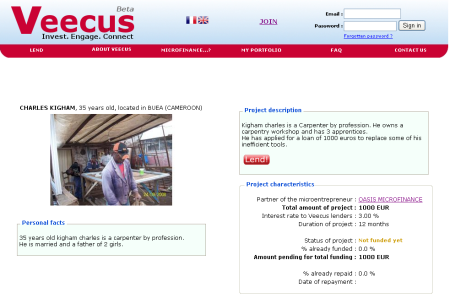 Kiva has now enacted changes in how currency risks are accounted for. The model was first proposed in March.
Kiva has now enacted changes in how currency risks are accounted for. The model was first proposed in March.
Now MFIs can choose “currency risk protection” for their new loans. If this option is selected lenders will have to cover any losses that arise from a devaluation of the local currency exceeding 20% (for the part that is over the 20%).
On listed loans at Kiva there will be a new information status on the “about the Loan” Section under “Currency Exchange Loss”. The status will either be:
- “Covered”: Meaning the MFI covers any losses (like it has been in the past)
- “Possible”: The MFI has opted for the new rule – the lender covers currency losses above 20%
I browsed some new loan listings today – most are still offered under the “covered” rule, one example of a loan under the new “possible” rule is this Tajikistan loan. Continue reading

 Launched in summer French
Launched in summer French  This week the new social lending service
This week the new social lending service 